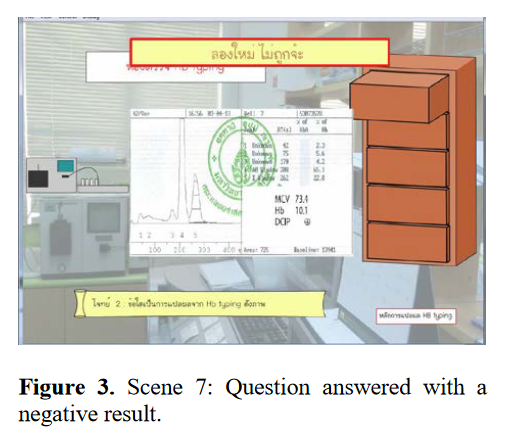Interactive e-Learning system for Thalassemia: a Case of University Hospital in Thailand
Keywords:
e-Learning, Interactive Content, Prototype, Medical Studies, AnonymityAbstract
Though most medical students are from top of the classes, it is no secret that gaining real-life work experience and advancing their careers require years of practical and hand-on experiences. To address the perceived skill and to bridge gaps, a first-hand
solution is launched in the form of a prototype being developed that take a unique spin on e-Learning system with interactive content. The tool is tested with domain expert and various levels of medical students and their anonymity. The preliminary result is shown to
be satisfactory for more coverage.
References
Anderson, T., L. Rourke, D. R. Garrison & W.Archer. 2001. Assessing teacher presence in a computer conferencing context. Journal of
Asynchronous Learning Networks 5(2): 1-17.
Back, D. A., N. Haberstroh, A. Antolic, K. Sostmann, G. Schmidmaier & E. Hoff. 2014.Blended learning approach improves teaching
in a problem-based learning environment in orthopedics-a pilot study. BMC Medical Education 14(1): 17.
Constantine, L. & L. Lockwood. 1999. Software for use: A practical guide to the essential models and methods of usage-centered design.Reading, MA: Addison-Wesley, Boston, 570pp.
Csikszentmihalyi, M. 1990. Flow: The psych-ology of optimal experience. Harper and Row,New York. 336 pp.
Gagne, R. 1985. The conditions of learning. (4thed.). Holt, Rinehart & Winston, New York.361 pp.
Galusha, J. M. 1997. Barriers to learning in distance education. Interpersonal Computing and Technology 5(3-4): 6-14.
Gibbs, W. W. 2004. Why machines should fear.Scientific American 290: 37.
Goh, J., & M. Clapham. 2014. Attitude to e–learning among newly qualified doctors. The clinical teacher 11(1): 20-23.
Horn, R. E. 1998. Visual language: Global communication for the 21st century. Macro-Vu, Inc., Bainbridge Island, WA. 270 pp.
Kearsley, G., & B. Shneiderman. 1999. Engage-ment theory: A framework for technology-based teaching and learning. http://home.
sprynet.com/~gkearsley/engage.htm (last accessed 30.4.2014)
Keller, J. M. 1987. Strategies for stimulating the motivation to learn. Performance and Instruction 26(8): 1-7.
LeBaron, J., & Miller, D. 2004. The teacher as agent provocateur: Strategies to promote community in online course settings. In T.
Latomaa, J. Pohjonen, J. Pulkkinen, & M. Ruotsalainen (Eds.), eReflections—Ten years of educational technology studies at the
University of Oulu. pp.109-125 http://herkules.oulu.fi/isbn9514276329/isbn9514276329.pdf (last accessed 30.4.2014).
Lin, C.- J. 1999. The effects of self-efficacy and task values on students' commitment and achievement in web-based instruction for
Taiwan higher education. Dissertation Abstracts International Section A: Humanities & Social Sciences 60(6-A): 1905.
Monk, A., M. Hassenzahl., M. Blythe & D. Reed. 2002. Funology: Designing enjoyment.SIGCHI Bulletin. September/October 2002:11.
Moss, C. 2002. Finding balance: The vices of our "versus". First Monday 7(1): http://firstmonday.org/ojs/index.php/fm/article/view/924/846
(last accessed 30.4.2014).
Norman, D. 2004. Emotional design. BasicBooks. No significant Difference, New York.257 pp
Roblyer, M., & L. Ekhaml. 2000. How inter-active are your distance courses? A rubric for assessing interaction in distance learning.
Online Journal of Distance Learning Admin-istration, 3(2): www.westga.edu/~distance/roblyer32.html (last accessed 30.4.2014).
Tufte, E. 1992. The visual display of quantitative information. Graphics Press, Chelshire, CT.197 pp.













